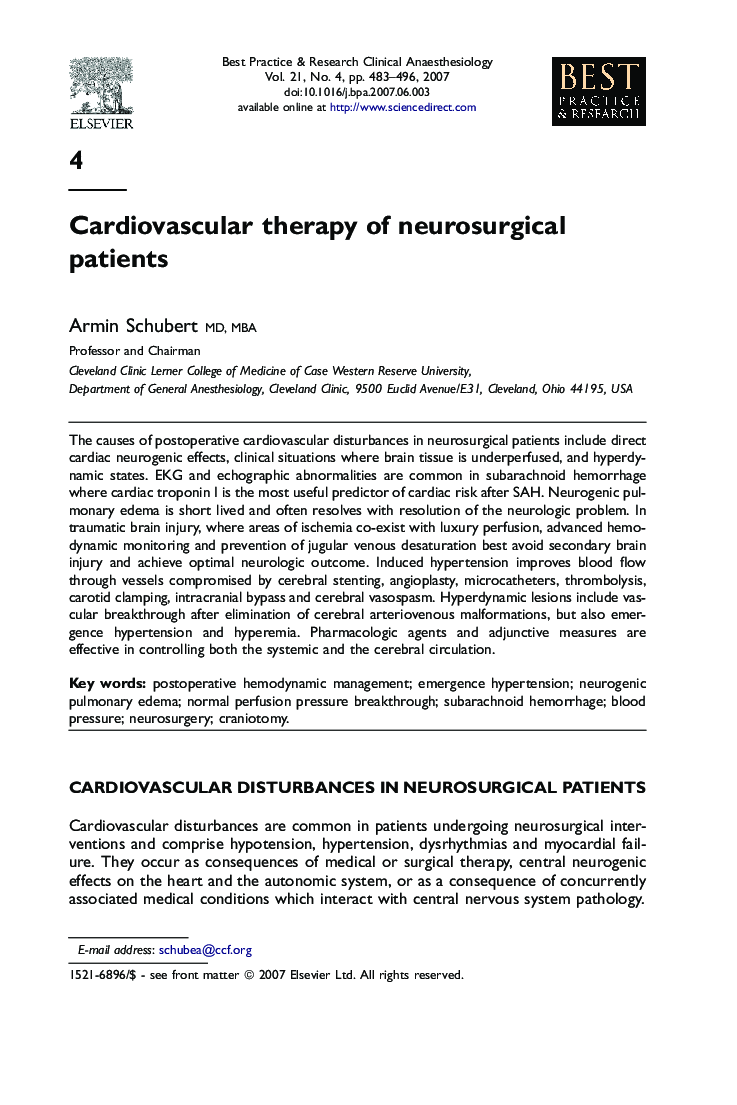| Article ID | Journal | Published Year | Pages | File Type |
|---|---|---|---|---|
| 2748701 | Best Practice & Research Clinical Anaesthesiology | 2007 | 14 Pages |
The causes of postoperative cardiovascular disturbances in neurosurgical patients include direct cardiac neurogenic effects, clinical situations where brain tissue is underperfused, and hyperdynamic states. EKG and echographic abnormalities are common in subarachnoid hemorrhage where cardiac troponin I is the most useful predictor of cardiac risk after SAH. Neurogenic pulmonary edema is short lived and often resolves with resolution of the neurologic problem. In traumatic brain injury, where areas of ischemia co-exist with luxury perfusion, advanced hemodynamic monitoring and prevention of jugular venous desaturation best avoid secondary brain injury and achieve optimal neurologic outcome. Induced hypertension improves blood flow through vessels compromised by cerebral stenting, angioplasty, microcatheters, thrombolysis, carotid clamping, intracranial bypass and cerebral vasospasm. Hyperdynamic lesions include vascular breakthrough after elimination of cerebral arteriovenous malformations, but also emergence hypertension and hyperemia. Pharmacologic agents and adjunctive measures are effective in controlling both the systemic and the cerebral circulation.
